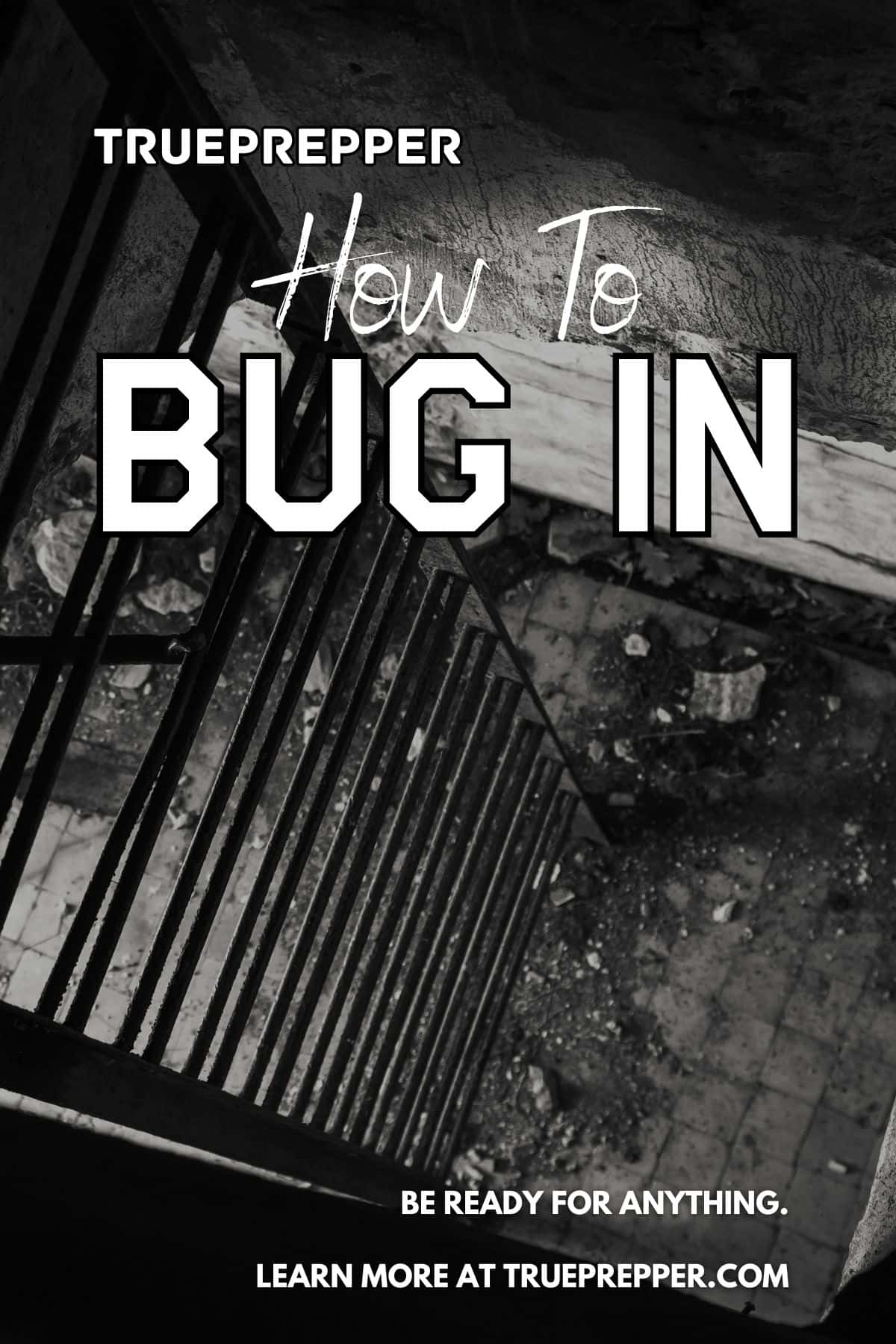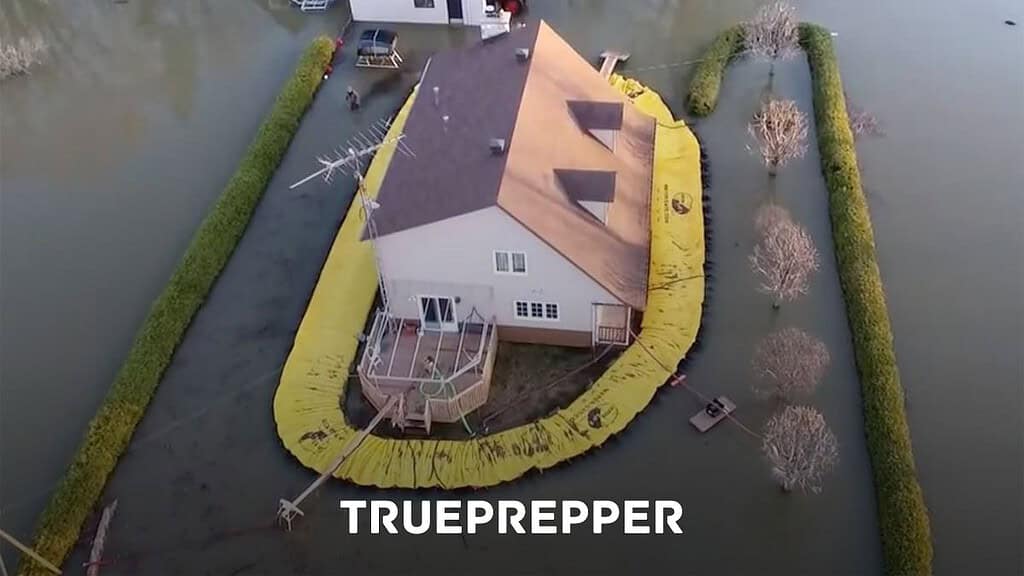
Introduction
When faced with a dire situation, escaping to safety is often the best course of action. But what if escaping is not an option? In such cases, having a Bug-In plan can be a lifesaver. A Bug-In plan involves staying put in a safe location, equipped with essential supplies and information. Unlike bugging out, which requires mobility, bugging in requires careful preparation and a well-thought-out strategy. In this article, we will explore what bugging in entails, the threats that may require you to bug in, and the key components of a bug-in plan.
What Is Bugging-In?
Bugging in is the act of staying in a secure location with the necessary resources for survival. It is the opposite of bugging out, where individuals leave their current location for a supposedly safer place known as a bug out location (BOL). Bugging in involves various approaches depending on the specific threats and stages of planning. If you intend to stay put during an emergency, you must have a well-developed bug-in plan and an ample supply of resources.
Threats That Require Bugging-In
Contrary to popular belief, the need to bug in is more common than the need to bug out. Bugging out requires advance notice, and without sufficient time, it can be extremely dangerous. Here are some threats where having a bug-in plan is crucial:
Bombings and Shootings
In scenarios involving bombings or shootings, bugging in is often the safest option. Being caught on the road during such incidents can be extremely risky.
Earthquakes
Earthquakes can strike with little to no warning, making bugging in the only viable choice. Evacuation may not be possible or practical during a seismic event.
Pandemics
In the face of a widespread pandemic, bugging in becomes essential to minimize exposure to infected individuals. Staying in a secure location with ample supplies and information is key.
Power Outages
During prolonged power outages, bugging in ensures that you have access to essential resources and can ride out the situation safely.
HAZMAT Incidents
In the event of a hazardous materials incident, bugging in is often the recommended course of action to avoid exposure to dangerous substances.

Space Weather
Space weather events, such as solar flares, can disrupt power grids and communication systems. Bugging in allows you to stay informed and protected.
Biological Attacks
In the event of a biological attack, bugging in is crucial to minimize exposure to harmful pathogens. Having a well-stocked shelter room becomes paramount.
Nuclear Attacks (indirect)
While bugging out may be the ultimate goal during a nuclear attack, having a bug-in plan as a temporary solution is wise. It may take time to reach your bug out location, and bugging in can provide a safe haven until then.
Chemical Attacks (indirect)
Similar to nuclear attacks, having a bug-in plan during a chemical attack is a prudent strategy. It allows you to wait out the initial danger before proceeding to your bug out location.
Key Components for Bugging-In
Whether you plan to bug in temporarily or as a long-term solution, certain key components are essential for a successful bug-in plan. These components include:
Shelter
A solid shelter is crucial for weathering storms, attacks, and incidents. Designate a specific room as your main shelter room, ensuring it is large enough to accommodate everyone in your family. Consider creative storage solutions like shelving or lofts to maximize space.
Survival Kit
A well-stocked survival kit is essential for bugging in. It should contain basic necessities and scalable supplies of food and water to sustain you for extended periods. Depending on the specific threats in your area, you may need to add specialty kits for nuclear accidents or earthquakes.
Security
Security measures should be an integral part of your bug-in plan. Choose a shelter room that is secure and defensible. Additionally, take steps to enhance security throughout your home to deter potential burglars. Prioritize security not only during bug-in planning but as a fundamental aspect of your overall preparedness strategy.
Information
Access to accurate and timely information is crucial during catastrophic events. Stay informed by keeping up with current events and learning about early warning systems. This knowledge can make a significant difference in your ability to respond effectively to emergencies.
Action Plan
No amount of gear or supplies is useful without a well-thought-out action plan. Develop an emergency action plan that outlines the necessary steps to take during various scenarios. Consider using a pre-designed template to ensure you cover all essential aspects of your bug-in strategy.
Get Home Bag
A Get Home Bag (GHB) is similar to a bug out bag but is specifically designed to help you navigate your way back home in case of an emergency. If you regularly commute or leave home for extended periods, having a well-equipped GHB can be invaluable in ensuring your safe return.
Bugging In as the Only Option
While many preppers opt for bug-out plans, some choose to rely solely on their homes as a safe haven. By fortifying their homes, generating their own power, and stockpiling supplies, these individuals prioritize self-reliance and security. Factors such as mobility issues, proximity to family and community, and the absence of a solid bug-out location can all influence the decision to bug in. However, it is important to note that ignoring evacuation orders is ill-advised, as first responder assistance may not be available, and it can lead to unnecessary risks.
The Answer is Almost Always in the Middle
Instead of polarizing the debate between bugging in or bugging out, it is more practical to be prepared for both scenarios. Each situation presents unique challenges, and the best approach may vary depending on the circumstances. Rather than subscribing to a single prepping strategy, it is advisable to be flexible and prepared for a range of potential events.
Conclusion
Developing a bug-in plan is more straightforward than it may seem. It can be as simple or as elaborate as you choose, but the important thing is to have a plan in place. By understanding what bugging in entails and implementing the key components of a bug-in plan, you can increase your chances of survival during emergencies. Take the time to develop your bug-in strategy and ensure you have the necessary resources to weather any storm that comes your way.
For more insightful reads and valuable resources, be sure to explore our other articles:
– Survival Food List | Pantry Stockpile Plan and Checklist
– Free Survival PDFs, Manuals, and Downloads [Prepper Library]
– Home Survival Kit Guide, Gear List, and Checklist
Keep exploring, stay prepared, and above all, stay safe.
—————————————————————————————————————————————————————————————–
By: Rusty Collins
Title: The Bug-In Plan: A Comprehensive Guide to Bugging In
Sourced From: www.trueprepper.com/how-bug-in/
Published Date: Sat, 04 Nov 2023 13:18:50 +0000

